If you take digital photos and care at all about your signal, then you should own, or be planning to own, a digital SLR camera.
Of the stuff people don’t understand about DSLRs, the easiest to explain and see is dust. You change lenses, some dust gets in and lands on the sensor, each subsequent photo displays that piece of dust. Whether you can see it or not it’s effecting your images.
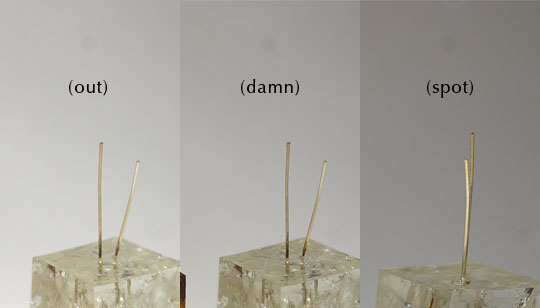
Despite my love of artistic challenges, eventually I got sick of framing my photos so I could crop out the dust, so I decided to have my sensor cleaned. I visited my friendly local camera suppliers and was informed that they would send my camera away for several days and charge me AU$80 for the privilege. Their alternative was a range of ludicrously priced cleaning solutions, costing on average around 20% of the camera’s purchase price. Thanks, but no thanks.
A little googling led me to Copper Hill Images’ CCD/CMOS Cleaning Tutorial pages. The procedure seemed relatively straightforward and only a little scary, so I hunted around and found an Australian supplier for the Copper Hill products. For AU$20 more than the price of a single commercial sensor clean I purchased the Ultimate DSLR Care Kit (US$51.95 on the Copper Hill Site), containing a Basic Sensor Cleaning Kit, Lens Care Kit and SensorSweep.
While frames taken in normal photography processes (especially infinity focussed images of smooth gradients such as the sky) can show signs of your dust collection, to really see it you need to act slightly strangely. Set the biggest zoom you can manage, focus to infinity, stop your aperture right down (f22 in my case), and take a picture of the nearest strong white illuminated source. I use a blank browser window on my laptop’s LCD, but if you’re out and about you can just “shoot the sky”. Whatever method you employ, you’ll get an image something like this:
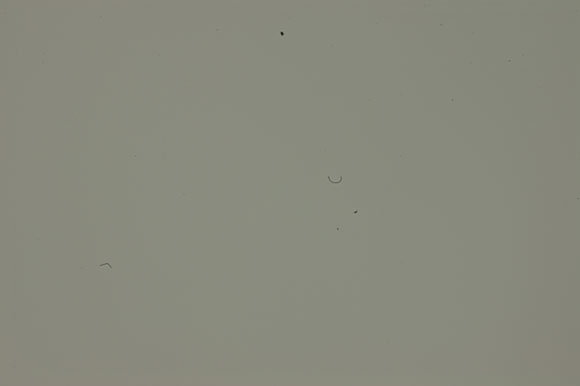
Looks a little grungy. Running Auto Levels will emphasize those spots a little more.
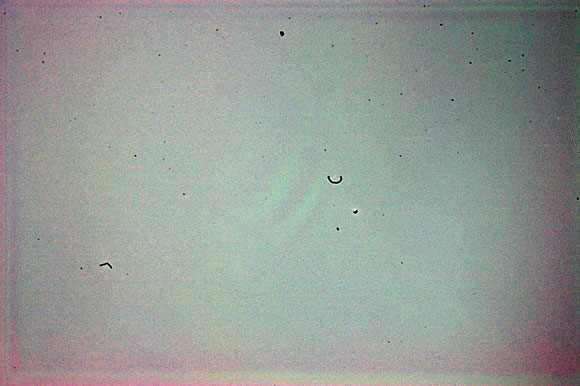
Interestingly about 5 of those specks (including one of those hairlike particles) seem to have come with the camera, appearing on the 20th frame I ever shot, coincidentally, to check for factory-installed dust.
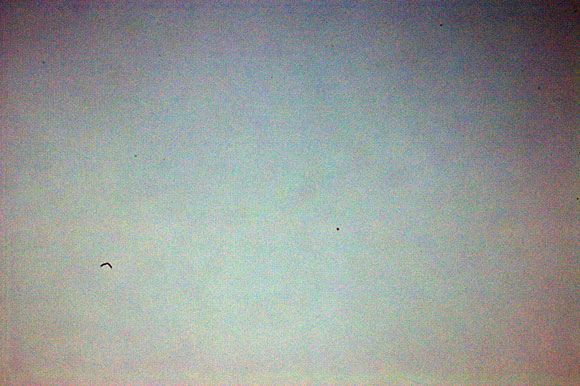
I’ve picked up a quite a collection since then, more than 50 specks by my quick count. So even my inexperienced hands and lack of a “clean room” environment should be able to get rid of some of those, right? The Copper Hill site provides this advice for selection of a sensor swabbing room:
I must address the obvious, which is the need to have a CLEAN and STILL work area for this task. NO frisbee, NO dogs, NO cats, NO rug-rats, NO jet engines, NO dandruff, and OF COURSE – NO powdery contraband allowed! OK?
IMPORTANT NOTE:
You MUST try to do all of your sensor swabbing in a completely still and quiet room. There should be no drafts of any kind, even from a heater or air conditioner. The amount of airborne dust, dirt and miscellaneous particles in the ambient air is unbelievable, to say the least. So to achieve a workable, sanitary environment, you have to go the extra yard here, even to the point of “obsessive compulsive” behavior.
Considering that I’ve let my sensor go 9 months without a single clean, I don’t think I can really claim to have any obsessive compulsive tendancies, so I just read the included instructions, closed the doors, grabbed a nice white clean shelf and a floor lamp to help me see the sensor, and laid out all of my new cleaning supplies.
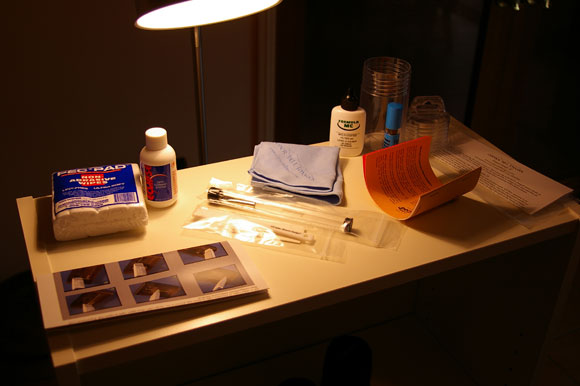
Then I put most of that stuff away and just used the sensor sweep brush. Having thought that those hairlike particles would need wet swabbing, or perhaps some kind of sandblasting rig, I was pleasantly surprised when my first sweep obliterated over half of my specks, including both of the scary hairy ones.
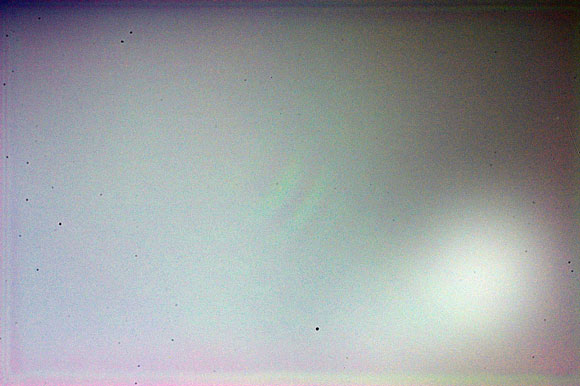
A couple of sweeps later and I was quite convinced that given a little time and a slight decrease in the stimulants consumed for breakfast could see me with an almost entirely dust-free sensor.
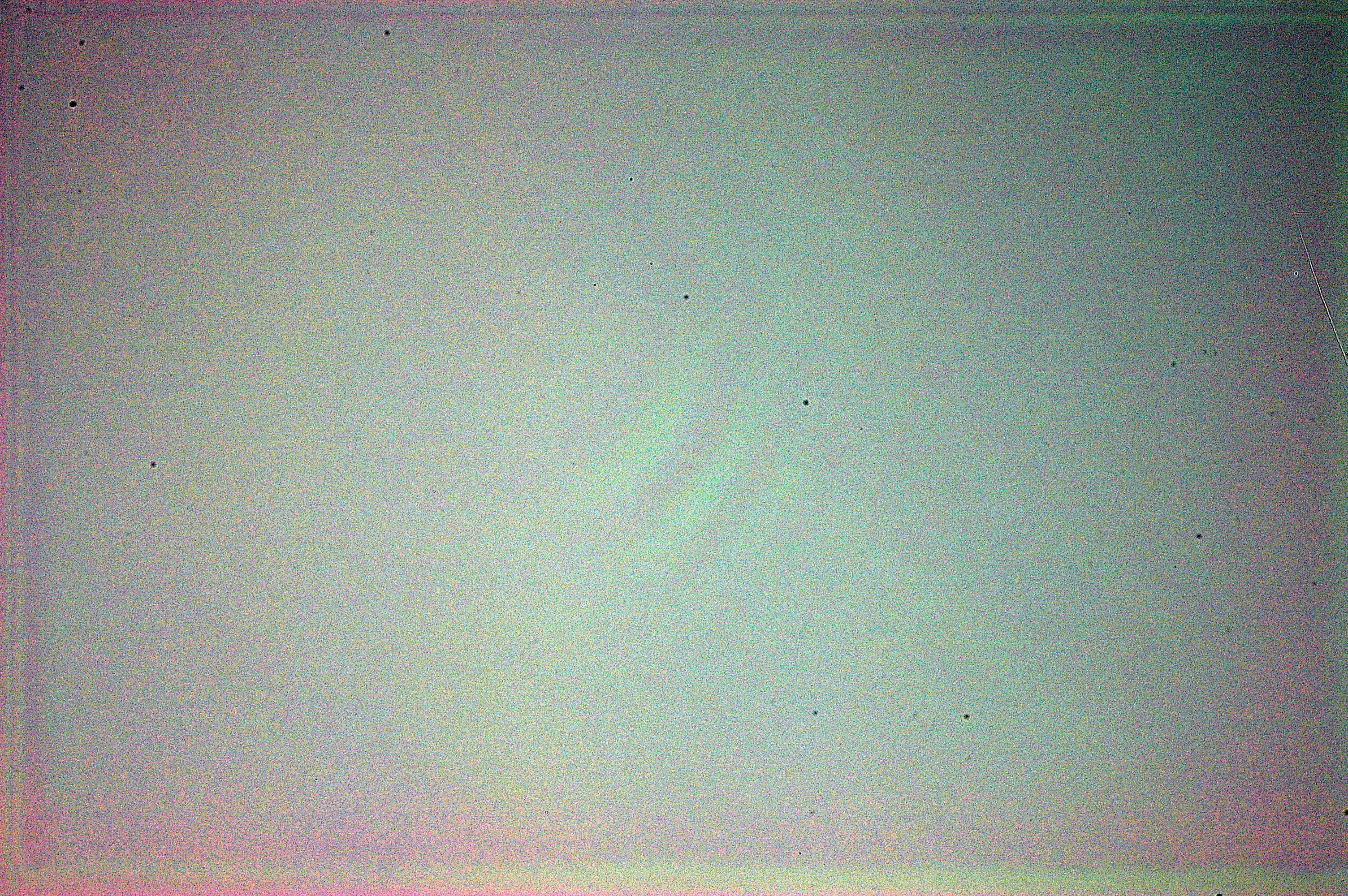
This turned out to be an extremely cost-effective and quite straightforward procedure. For the progress so far I could have just picked up the Sensor Sweep for AU$30ish, which has reduced my dust load to below “factory” levels. However for a little more than the price as a factory clean I now have enough materials to do 100 “wet” cleans, and more dry sweepings and lens cleanings than I expect to need in the forseeable future of this camera.
US Suppliers: Copper Hill Images has this kit, Amazon has some other options.
Australian Suppliers: Quality Camera Sales